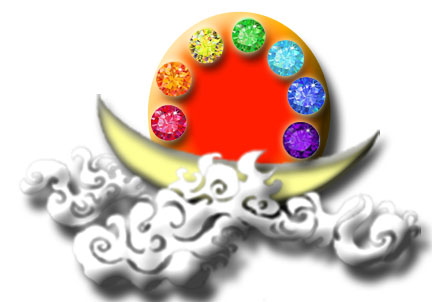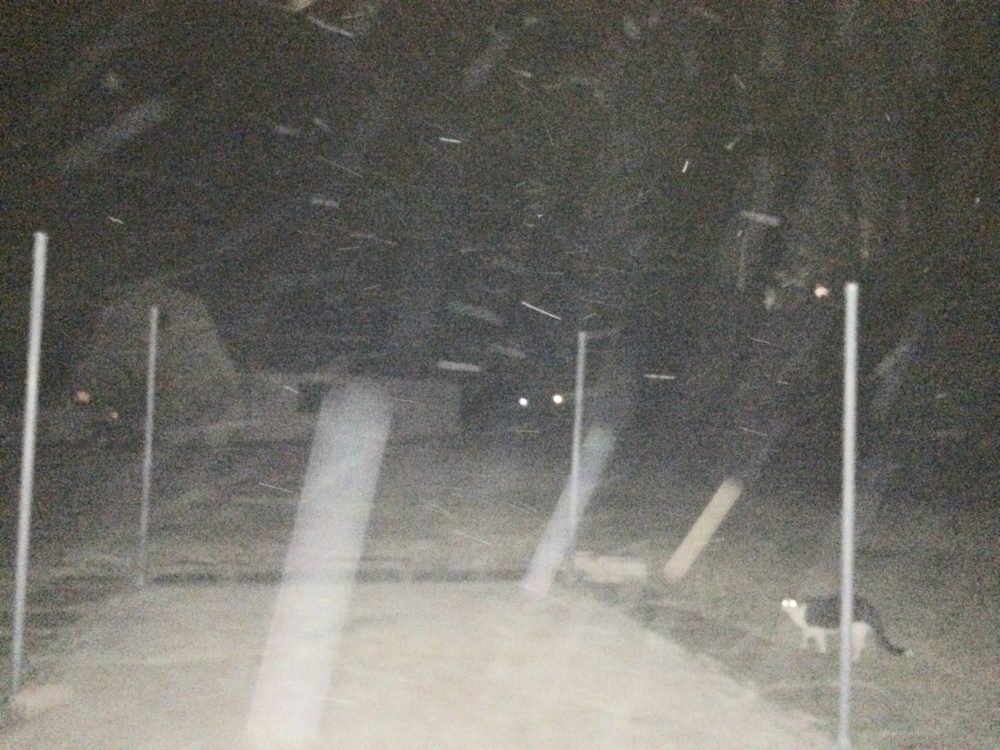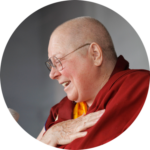At our Lemonade Sangha open mike today, a request was made for accounts of the lives of true Buddhist saints that we could study to gain insight on how others have lived a holy life. I went back to the courses we had offered at the Xuanfa Five Vidyas University (XFVU) and came up with a list, adding a few more I found on Amazon. Some of these will be hard to find as they are often limited editions and soon out of print. There are several collections including Masters of Mahamudra and histories of the various lineages that are also useful. I won’t vouch that everyone on this list is a saint or bodhisattva, but they were all well known and respected practitioners in their traditions and considered as such by their followers. I had selected the list to be representative of most of the great lineages in India, China, Tibet, Japan, and Southeast Asia.
Biographies and Autobiographies of Buddhist Saints
| Great Disciples of Shakyamuni Buddha | 5th-6th century BCE | Indian | Survey the background, practice, and accomplishments of Shakyamuni Buddha’s greatest disciples including Sariputta, Maha-mogallana, Mahakassapa, Ananda, Anuruddha, Mahakaccana, Great Women Disciples, Angulimala, Anathapindika, and others. Great Disciples of the Buddha: Their Lives, Their Works, Their Legacy by Nyanaponika Thera & Hellmuth Hecker. |
| Garab Dorje | 6th century BCE-2nd century CE | Indian | The historical origins of dzogchen including comparing and contrasting dzogchen, Kashmiri Saivism, and other similar systems. The Golden Letters, foreword by Namkhai Norbu Rinpoche |
| Padmasambhava | 536 BCE-8th century | Indian | The life and teachings of Padmasambhava including his teachings on the Bardo and specific profound instructions given to Yeshe Tsogyal. The terma text used is, Natural Liberation: Padmasambhava’s Teachings on the Six Bardos, includes commentary by Gyatrul Rinpoche. The Lotus Born: The Life Story of Padmasambhava by Yeshe Tsogyal. |
| Xuanzang (Hsuan Tsang) | 596-664 | Chinese-Fa hsian | The seventh century Chinese monk Hsuan Tsang (Xuanzang) left China against his emperor’s orders and traveled to India in search of Buddhist texts that were not then available in China. After traversing the famous Silk Road, he reached his destinations, met the rulers of the land at that time, and studied his favorite text Yogacarabhumishastra under the famous teacher Shilabhadra of Nalanda University. Nearly fourteen years of his life (from 630 to 644 CE) were spent visiting Buddhist temples and monasteries, cities and places of interest in the Indian subcontinent including what is now known as Afghanistan. His study of the Bamiyan monasteries and colossal Buddhas have inspired art historians to make a thorough study of the cultural history of Afghanistan. He recorded his pilgrimage in great detail, capturing the state of Buddhism in the world at that time and documenting many sites and events. He returned to China a hero and spent his remaining years translating the many sutras and commentaries that he brought back to China. A Biography of the Tripitaka Master of the Great Ci’en Monastery of the Great Tang Dynasty; Xuanzang: A Buddhist Pilgrim on the Silk Road by Sally Wriggins; Ultimate Journey: Retracing the Path of an Ancient Buddhist Monk Who Crossed Asia in Search of Enlightenment by Richard Bernstein. and the Journey to the West. |
| Vairochana the Translator | 7th-8th century | Tibetan–Nyingma | Vairochana the Translator (Vairotsana) was a great Tibetan dgozchen master, who like Padmasambhava is credited with bringing the highest dharma to Tibet. His autobiography, as told to his closest disciples near the end of his life, not only tells of the great trials he endured to learn the precious doctirne, but also gives the origin and history of the dzogchen transmission itself. The Great Image: The Life Story of Vairochana the Translator by Vairochana. |
| Lady Yeshe Tshogyal | 8th-9th century | Tibetan-Nyingma | Course will explore the life-story of Yeshe Tshogyal, major disciple of Guru Padmasambhava, as written by one of her fellow disciples. The terma used as the textbook, Mother of Knowledge, tells the dramatic story of her flight from home, her life as a queen of Tibet, the stages of her spiritual training, and her enlightened accomplishments. The most important woman in the Nyingma lineage, she received all of Padmasambhava’s teachings and was instrumental in transmitting them to future generations. This text demonstrates the qualities and attitudes essential for the pursuit of the Vajrayana. Other texts are also given for further reference. |
| Tilopa | 988-1069 | Indian | Tilopa’s Wisdom: His Life and Teachings on the Ganges Mahamudra by Khenchen Thrangu. |
| Lady Niguma | 10th-11th century | Tibetan-Shangpa Kagyu | This course will study one of the two matriarchs of the Shangpa Kagyu sect using as text, Sara Harding’s Niguma, Lady of Illusion. Niguma was a mysterious eleventh-century Kashmiri woman who became the source of a major Tibetan Buddhist practice lineage. The course will study the thirteen works that have been attributed to Niguma in the Tibetan Buddhist canon. These collected works form the basis of an ancient Shangpa lineage held by the great mahasiddha Tangtong Gyalpo, Kalu Rinpoche, and others. |
| Milarepa | 1052-1135 | Tibetan-Karma Kagyu | Generally considered one of Tibet’s most famous yogis and poets. He was a student of Marpa Lotsawa, and a major figure in the history of the Karma Kagyu school of Tibetan Buddhism. |
| Lady Machig Labdron | 1055-1153 | Tibetan-Chod | She developed a system, the Mahamudra Chöd, that takes the Buddha’s teachings as a basis and applies them to the immediate experiences of negative mind states and malignant forces. Her unique feminine approach is to invoke and nurture the very “demons” that we fear and hate, transforming those reactive emotions into love. It is the tantric version of developing compassion and fearlessness, a radical method of cutting through ego-fixation. The course will look at the life of Machig and also look at several Chöd sadhanas written by the Third and Fourteenth Karmapas and a commentary by Jamgön Kongtrül. |
| Honen | 1133-1212 | Japanese, Pure Land/Shin | Honen The Buddhist Saint: Essential Writings and Official Biography (Spiritual Masters: East and West) by Joseph A. Fitzgerald |
| Dogen | 1200-1253 | Japanese-Zen | The 13th century Zen master, Eihiei Dogen Zenji was central in bringing Zen from China to Japan. This course will explore his most well known work, the Shobogenzo. Click icons to learn more about and/or to order books by and about this great Japanese master. |
| Rangung Dorje | 1284-1339 | Tibetan-Kagyu | The Third Karmapa Rangjung Dorje: Master of Mahamudra, by Gamble Ruth. |
| Dolpopa Sherab Gyaltsen | 1292-1361 | Tibetan-Jonang | The most famous scholar of the Jonang school, Dolpopa Sherab Gyaltsen (1292-1361), who is most well known for his articulation of the shentong view of “other emptiness”. Course will also provide an introduction to his views. The texts that will be used in course are The Buddha from Dolpo by Cyrus Stearns and Mountain Doctrine by Dolpopa. |
| Longchenpa | 1308-1364 | Tibetan-Nyingma | The Life of Longchenpa: The Omniscient Dharma King of the Vast Expanse by Jampa Mackenzie Stewart |
| Tsongkhapa | 1357-1419 | Tibetan-Geluk | Tsongkhapa: A Buddha in the Land of Snows by Thupten Jinpa |
| Tangtong Gyalpo | 1361-1485 | Tibetan-Shangpa Kagyu | The great heroic Tibetan Mahasiddha, Tangtong Gyalpo, who lived over 124 years in the fourteenth and fifteenth centuries using as text, King of the Empty Plain by Cyrus Stearns. Known as the wild engineer-saint of both Tibet and Bhutan, Tangtong Gyalpo was known for his accomplishments in technology (he invented a process for building iron bridges that were amazing structures that lasted until modern times), the arts (he founded the first Tibetan Opera Drama troupe), medicine (some of his cures are still used in Tibetan medicine), and transmission of the highest dharmas of liberation. Although most unconventional in appearance and methods, he is the most famous of the patriarchs of the Shangpa Kagyu lineage. He was also the most traveled of the early Tibetan holy men, traveling all over India, Afghanistan, probably Sri Lanka, and visiting the holy Mt. Wu-Tai in China. |
| Jamgon Kongtrul Lodro Taye | 1813-1899 | Tibetan-Rime | Jamgon Kongtrul was one of the founders and proponent of the nonsectarian (Rime) movement that flourished in eastern Tibet. He was also one of the most prolific writers in the Tibetan world. His Retreat Manual on how to conduct and participate in a three-year/three-month/three-day retreat is still followed in some Tibetan traditions. Also has autobiography. The Life of Jamgon Kongtrol the Great by Alexander Gardner |
| Dudjom Lingpa | 1835-1904 | Tibetan-Nyingma | Autobiography by a 19th century Tibetan tantric master and Treasure Revealer, Dudjom Lingpa, in A Clear Mirror. |
| Dudjom Jigdral Yeshe Dorje | 1904-1987 | Tibetan-Nyingma | This Dharma King was the first head of the Nyingma Sect in India after the Chinese took over Tibet. |
| Ajahn Mun | 1870-1948 | Theravada-Thai | The life and teachings of the founder of the modern Thai Forest Tradition and the teacher of Ajahn Cha and other well-known Theravada masters and will use the Spiritual Biography by Maha Boowa Nanasampanno as text. |
| Jamyang Khyentse Chokyi Lodro | 1893-1959 | Tibetan-Rime | Biography by Dilgo Khyentse Rinpoche. |
| Mogok Sayadaw U Vimala | 1899-1962 | Theravada-Burmese | The life and teachings of a well-known Burmese vipassana meditation master who stressed learning and understanding the principles of Paticcasamuppada (Dependent Origination) and the nature of impermanence before starting actual meditation practice. This was according to the method used by Shakyamuni Buddha. He is believed to have become accomplished, leaving relics as proof. |
| Dilgo Khyentse | 1910-1991 | Tibetan-Nyingma | Brilliant Moon: The Autobiography of Dilgo Khyentse. |




Add comment